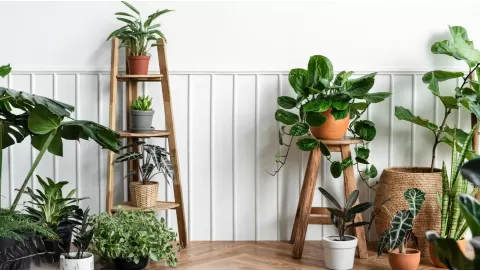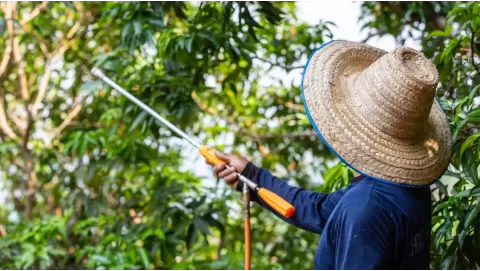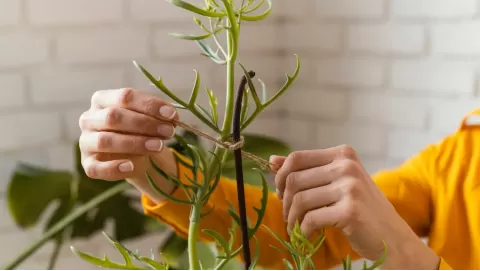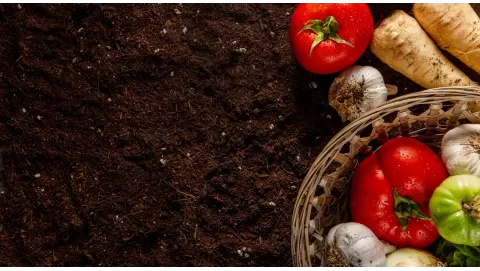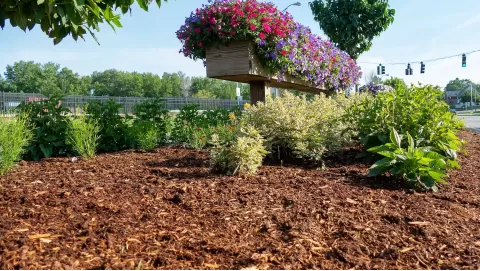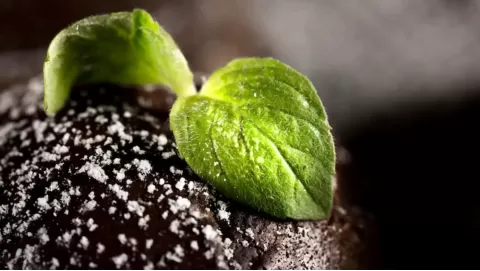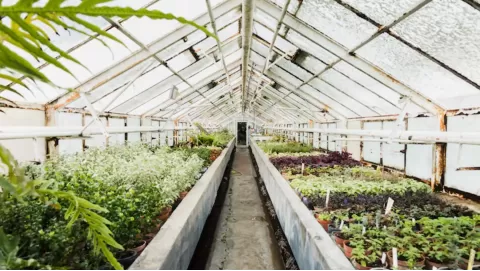
Cactus care 101: How to grow and maintain desert plants
Cactus is an interesting plant in the Cactaceae family with over 2000 species. Native to America and especially arid and desert regions, it has adapted to survive in some of the most valueless spots on Earth. That's what makes it unique because it can thrive on so little amounts of water and so much sun, in comparison to all other plants.
The main ingredient of Cactus is its succulence. But Cactus does possess a fat, fleshy stalk that stores water. This enables these plants to retain water over longer periods, which aids them in surviving long dry seasons. These Stems generally have some sort of ribs or sections that allow them to expand or contract depending on how much water is stored inside the plant.
The cactus has adapted methods for conserving water. The leaves are rudimentary or very small (at least most species). Except, instead of true leaves, these guys are armed with spines that multitask -- protecting the animals from a slew of hungry mouths all while keeping shade over their herd by reducing the amount of air (and, therefore, transpiration loss) that passes across the marine animal's surface.
Cactus is a hardy selection of plants that can also construct bright, spectacular bouquets. While flowers may not last long, they tend toward the bright and showy. Moreover, some cacti species have fruits which are an important part of the diets of various animals in the deserts where they grow, spreading the seeds through their feces.
Cactus plants and gardens are loved by all, yes, we all love cactus to have them around as they so well represent a desert graphic or woodland graphic, for that matter! You will need several gardening tools to plant and care for them. Growcycle offers a variety of products, from special cactus soil to pots, to allow these desert plants to thrive in any setting.
Essential Care Tips to Thrive Cactus
Below are a few essential thoughts for you to learn how to care for a Cactus to ensure that it is well and alive. If you take some of these simple precautions, at least keeping a cactus nice and thriving will be easier.
- Light
Cacti are a sunny desert plant. They don’t like low light or dim lighting, so this room will need a decent amount of natural light so they can stay strong and healthy. Inside, to soak up the sun, ensure that the cactus is placed facing the south or west, where it can get drunk off of sunlight for much of the day, and water sparingly.
If there is no such window, an eastward one will do just fine for the Cactus. This kind of spot receives some unfocused low-level early morning sun, not punishing, but it’s not nothing. Don’t let your Cactus become wilted, elongated, and whitened with lack of sunlight; stop breathing in space with no or weak lighting.
The majority of Cactus types need at least 6 hours of direct sunlight a day. Keep this plant healthy and looking good by giving it plenty of sunlight.
- Watering
The cactus is a variety of plant that is resistant to drought and does not require watering as often. Soak plant, water in well, and then allow to go dry, following the “soak and dry” watering rule of your plant, as this is the correct amount of water and without overwatering, which leads to a plant death. They should be allowed to dry out completely, then properly drenched before they are watered. Therefore it becomes very unlikely that moisture is accumulating in this plant which would cause root rot, and which could happen if it is too excessive.
While in summer and spring, it casually needs a good watering every now and then. For instance, if it’s kept in a small pot — anything 3 inches or less in diameter, for example — you might have to water frequently, about once a week, because small pots dry out faster. But if you have a large cactus plant in the pot, watering every two or three weeks is enough. When the winter months come, the Cactus goes dormant and will need a lot less watering than it once did; not as much water is needed as your seasons progress.
Overwatering can be avoided by using a moisture meter. This tool allows gardeners to check the moisture of the soil and only water their cactus when the time is needed.
- Humidity
Cactus desert plants are suited to dry conditions. Therefore, in order to have a healthy Cactus, it is necessary to have dry air around them. Too much humidity can also lead to problems such as fungus growth or soil that’s oversaturated, leading to root rot.
So you wouldn't want to put the Cactus in, say, the bathroom and kitchen because those areas are usually wetter/damper than other rooms. They hold water in them, which is not ideal for cactus plants. Avoid such rooms, and go for those rooms that are airy and a bit less humid and drier, as you would find in the desert, where cacti thrive. This plant does really well when kept on the drier side, avoiding all the usual woes and promoting good growth.
- Temperature
Cacti are warm-weather plants, and 60 to 80 degrees Fahrenheit (16-27°C) is ideal for them. These are not only alike; they bear resemblance to those found in the desert, their native habitats. So the plants need that kind of warmth inside.
The chilli is hardy to cooler temperatures in winter, not draughts or sudden temperature change! The sudden cooling of plants by such cold water can shock the plants, and it could damage them. Some succulents thrive in dry air, but in the winter, for instance, placing a Cactus next to a drafty window or an air conditioner vent will just fill its environment with cold air, which the plant does not enjoy!
This plant does well at a range of temperatures. If it is not that hot, the temperature of a cactus also applies in shade, provided that the cactus is protected from drafts of cold air and it also does not get overheated.
- Soil
Because of this need for specialized soil conditions, well draining soil is the most essential element in cactus gardening. These plants are prone to root rot when they retain too much moisture, so using the right soil is crucial. The best formula for potting Cactus is a basic Cactus potting soil that lets go of water easily and has low moisture content.
If so, the Cactus mix should be low in nutrients as compared to regular potting soil or garden soil, and it should not hold water around the plant's roots. Typical potting soils hold on to moisture and nutrients longer than this plant cares for — overwatering woes and rotted roots can be attributed to this.
The soil mix for cacti should not be merely a generic one for all succulents. This will keep the Cactus healthy and the roots from getting soggy, which will encourage mold.
- Fertilizer
Cactus/succulent can be fertilized only by Cactus or succulents specially prepared fertilizer. These fertilizers have lots of phosphorus and potassium and little nitrogen, all the way through to maturity to avoid overfeeding the plant.
Interesting you have to wet the Cactus first, before application of the fertilizer. This way, the roots will not burn; don’t risk spreading manure over dry ground. Once that is the case, you can apply that diluted fertilizer according to the directions of the label.
This is not a heavy feeder, so fertilizing once in the spring and again in early summer will be adequate. There is no need for over-fertilizing, and it can actually be detrimental, as these desert plants don’t require large quantities of nutrients.
Techniques To Grow Cactus Fast
Today let’s talk about some useful tricks on how to get Cactus to grow faster! Following these practices will ensure a healthy, thriving plant.
Pruning
You seldom need to prune cactus, since they grow slowly and take months to form. The only pruning required is to cut out any damaged/infected parts of the cactus. It is also advisable to wear thick gloves and use sharp, sterilized cutting tools to avoid injuries and infections from some diseases while pruning.
Propagation
If you have offshoots or pups on a cactus, you can propagate it. On the other hand, propagating a Cactus is not an easy task, but its results are very rewarding. Again these pups are taking from the mother plant and reducing the water and nutrients that the plant absorbs.
It’s probably optimal to propagate in spring so that new cuttings can have a better shot at establishing roots. For this, you would require a nice pair of thick gloves, sterilised cutting tools, Cactus potting mix, and small pots. The rooting hormone may improve the success rate, but it isn’t required.
- Growers begin the process of propagation by making sterile cuts just below each new pup or an offshoot from the parent to keep infection out of the new ones.
- So that they do not rot, let them dry out and harden or callus for approximately one week in a bright, dry spot.
- Pot up in small pots of soilless potting mix formulated for succulents such as Cactus.
- If you prefer to use a rooting hormone, dip the cut end of each cutting into the hormone and place it in the moist (but not soaking wet) soil.
- Be sure to mist the soil regularly, maintaining a slight moisture.
- The roots should have developed in about 6 weeks, when the cuttings can be potted on in to larger pots to encourage further growth.
Repotting
Repotting is important to cactus plants because it allows the grower to renew the nutrients in the soil once the roots have outgrown the pot. This can be a bit complicated but you will ensure that these plants live and bloom. On average it should be repotted every 2-4 years, however it can be kept longer provided you feed it in the growth season.
- Cactus plants are spiny, and it is advisable to cover the cactus with newspaper or cardboard to avoid pricking yourself whilst carrying it.
- If you don’t know what to put cactus plants in, that’s great for cactus plantsIf you’re gonna grow cactus plants, I really suggest you, grow them in terracotta pots because they contribute to airflow around the roots, also, terracotta absorbs water, so only what necessary water needed for the cactus will there and it lets the root rot to not be happened.
- Inspect the roots before you repot; cut off any dead or damaged roots. Allowing the plant’s roots to dry out for a couple of days before repotting can help you to see which ones are unhealthy and prune them, to reduce the likelihood of infection.
- Cactus replanting in spring is the ideal season, as they will start doing new things when the temperatures start rising and the hours of daylight become longer.
- First, one-third of a bag of Cactus potting mix is added to the new pot. Gently place the root ball in the center of the pot.
- Add more soil around this root ball while pressing it gently until the Cactus is firmly held by soil compression.
- After transplanting, it is best to wait a few days before watering deeply into the pots containing the repotted Cactus. Since repotted plants are often still adjusting to their new homes, avoid watering for at least a week after repotting.
- Keep an eye on the Cactus in the week or two of adjusting to its new environment, but when it has adjusted, get back into the normal watering and feeding routine.
Common Types of Cactus
They are of different forms, and some are not like others. Here are a few notable types:
- Barrel Cactus
The Ferocactus genus of cacti is characterized by the rounded shape of the Barrel Cactus. It gets it's name for for its thorn covered barrel shaped stem, with hard, dense prickles. The flowers of the barrel Cactus are fascinating, and we seldom see these except when they are fully mature.
- Blue Candle Cactus
Blue Candle Cactus is a beautfiul succulent that is native to Mexico. It is the typical candle flame with bright blue-white stems. It grows like a candelabrum; its branches spread out freely, so it looks particular and nice.
The branchy habit and vibrant color makes this cactus fairly popular in cultivation. Blue Candle Cactus prefers full sun to bright light with dry to not-so-dry, well-drained soil and is low water, thus it's like many other popular types of cacti and other succulent plants that are well adapted to hot, dry desert-type climates.
- Mammillaria Cactus
Mexico’s Mammillaria Cactus is a graceful cactus plants from central Mexico. Stalks are beautiful dark green with spikes of bronze-orange. This one is relatively drought tolerant and produces lots of "babies" or side shoots that you can separate to get new plants.
Benefits of Cactus Plants
Then, cactus and succulents aren't just visually striking houseplants but also have lots of practical advantages that can be very helpful at home. This is what a Cactus can bring to the beneficiary of its living space:
- Air Purification
Cactus also transforms carbon dioxide to oxygen like all its mother plants, so it also helps in purifying indoor air. They also can suck up pollutants in the air and in doing so help clean it. In order to keep the air in the house absolutely clean, one Cactus should be had for ten of the inmates of the house.
- Stress and Anxiety Reduction
Cactus eliminates stressfulness and anxieties by also decreasing the co2 in home, thereby irritability. Because of its calming effects, the comb is a surprisingly crucial part of the home (or workspace) for people who deal with stress. It’s soothing, and can help people heal more quickly.
- Noise Reduction
Indoor Cactus plants are also excellent in absorbing noise. They are also noise absorbing and that certainly comes in handy if you have them near windows, doorways or work stations. And in the process, they help create more peaceful, quieter environments.
- Healing Properties
Cactus also offers a variety of health benefits. It is also anti-viral and can help protect neurons as well. It has also been proven antioxidant, to control sugar levels, to treat prostatic hypertrophy and to lower cholesterol. It contributes indoor humidity, which can aid dry skin and itching issues.
Common Issues and Solutions
Now let’s see some of the common problems that can come with Cactus. The sooner you can recognize these problems, the better able you’ll be to manage them appropriately so that your cactus will be kept healthy:
- Pests
Though Cactus and succulents are generally easy to care for plants, they can sometimes suffer from pest problems. Root mealies and mealybugs are the worst occurances of insects. These little buggers can cause all kinds of issues if the cactus is not in good health.
Do not put this plant in a humid place — it requires a lot of sunshine and air to avoid infestations. Shop fast-draining soil Fast-draining soil will help prevent too much moisture, leading to a nest for pests.
- Cochineal Scale Bugs
Cactus scale insects are especially troubling to Cactus but predominantly the Opuntia kind such as Angel Wing or Rufida Minima Cinnamon Cactus. They feed on leaf sap that can weaken or even kill the plant.
To treat cochineal scale, begin by spraying infected areas with water to expose and help soften the insects. Insect infestation: That may be an insect pest. And you should spray the Cactus with insecticidal soap, or use a gallon of water mixed with 2.5 milliliters of dish soap. Pruning and disposal of heavily infested pads can help reduce spread, especially in areas with heavy infestations.
- Severe Infestations
A combination of insecticides and dormant oil sprays and insecticidal soaps may be required for heavy infestations. Good control is by use of Malathion, triazide, or combination of Neem oil or Volck dormant oil spray. Do not do these treatments on hot, sunny days though, because the dormant oil can burn the cactus. Use a pesticide that includes dish soap if the weather is hot.
FAQ’s
What is the lifespan of an indoor Cactus?
The indoor Cactus plants life span can vary a great deal depending on the species' type and how it is grown. Given the right watering, sunlight, and soil, most folks can keep an indoor Cactus alive for 10 years! But some survive only a few months, while their siblings out in the wild outdoors can endure a full three centuries.
How can growers revive a dying Cactus?
The only cure for a lovesick Cactus is to give its rotten or injured parts. This means feeding its light absorption and moisture intake right. Fertilizing with low-nitrogen feed, good for the Cactus in making it all better.
Can the Cactus plant be grown indoors?
Cactus plants can indeed be grown indoors. They do well indoors as they prefer it to be dry and are low maintenance plants.
The Bottom Line
Cactuses are a real favourite I mean, cactus - people say cacti are a bit daft and all that. It’s a touch of nature and a no-fuss plant wherever you go. Understanding the specific needs (such as light, water needs, humidity and soil type, as well as treatment regulation, among other challenges) is important to avoid causing damage to the Cactus.
Use the well-draining soil and quality pots that you need — Growcycle has it all. With a little love and care, these Cactus plants are great indoor plants and will make a wonderful addition to your home – bringing a little bit of desert beauty to your living space.
Disclaimer: This material is for informational purposes only and should not be relied on for legal, medical, financial, or any other form of professional advice.




